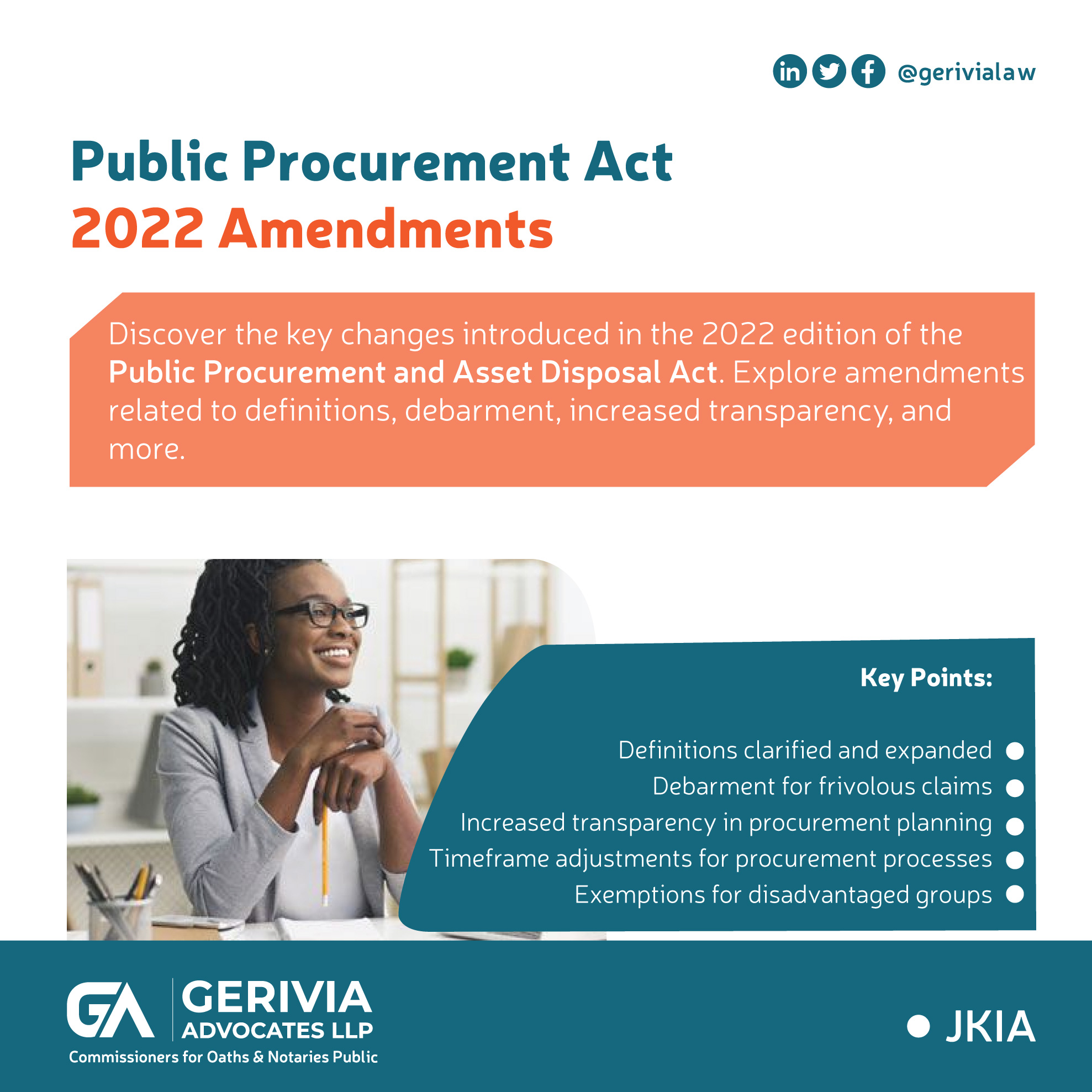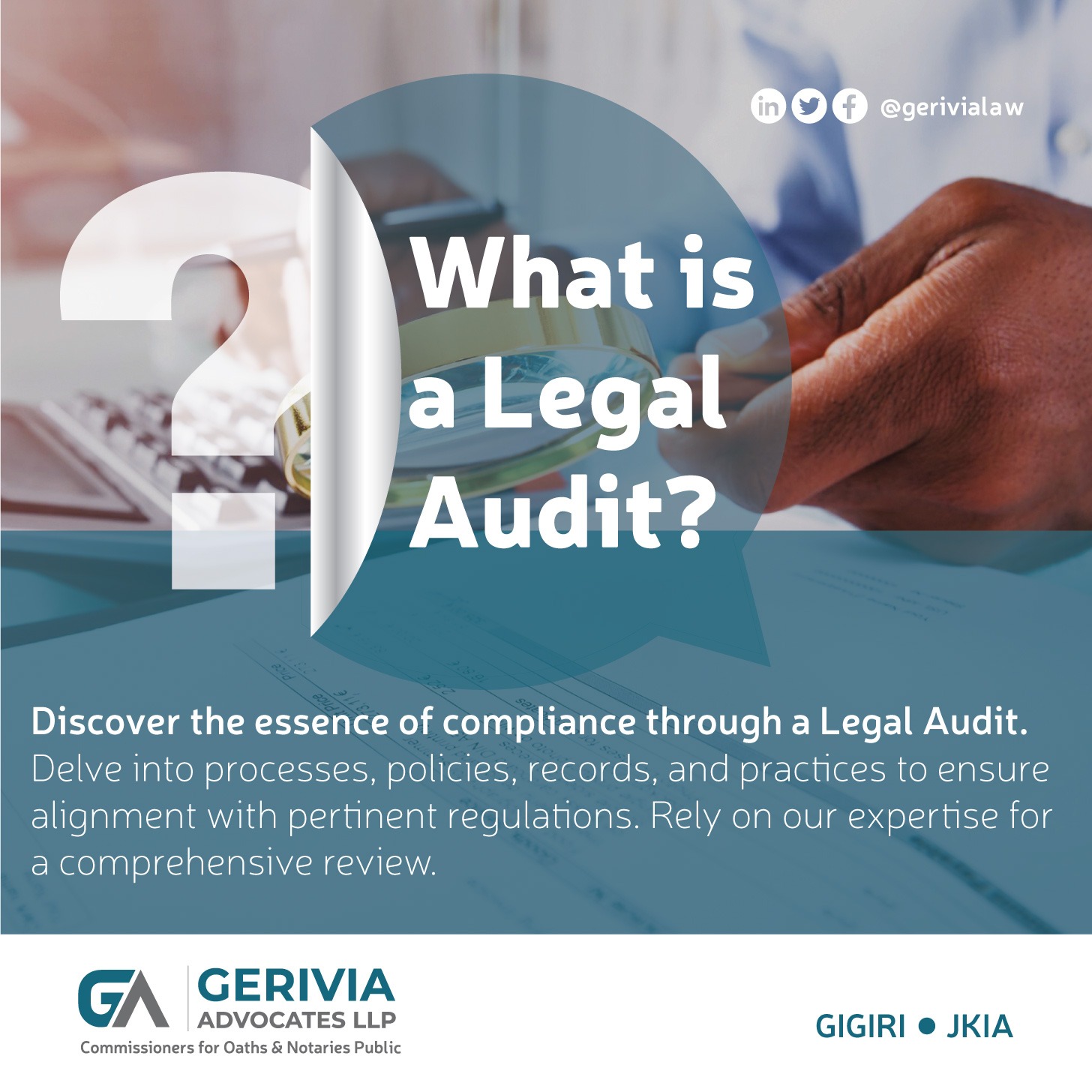- What is a merger?
- Section 2 of the Competition Act, 2010 defines merger as any acquisition of shares, business or other assets whether inside or outside of Kenya resulting in the change of control of a business, part of a business or an asset of a business in Kenya in any manner and includes a takeover.
- It also includes an arrangement where the assets of two or more companies become vested in or under the control of another company.
- Which are the categories of mergers?
There are three categories of mergers in terms of the threshold guidelines, which are:
- mergers requiring a comprehensive/ full merger notification;
- mergers requiring an exclusion application; and
- mergers not requiring any notification.
- Which mergers require notification to the Competition Authority?
According to the Competition General Rules of 2019, the following merger transactions require notification to the Competition Authority:
- mergers resulting in a minimum combined turnover or assets of KES 1 billion and turnover or assets of the target undertaking is above KES 500 million;
- mergers where the turnover or assets of the acquirer is above KES 10 billion and the merging parties are in the same market or can be vertically integrated;
- mergers in the carbon-based mineral sector where the value of the reserve, rights and associated assets exceeds KES 10 billion; and
- mergers meeting the requirements of the COMESA Competition Commission Merger Notification Thresholds and two thirds or more of turnover or assets is generated or located in Kenya.
- Which mergers do not require notification/approval of the Competition Authority?
The following merger transactions do not require notification or approval of the Competition Authority:
- where the combined turnover or assets of the merging parties does not exceed KES 500 million;
- the merger meets the COMESA Competition Commission Merger Notification Threshold and at least two thirds of the turnover or assets are not generated or located in Kenya – however, the CAK should be notified in writing that a transaction has been notified to COMESA Competition Commission within 14 days of filing the notification to COMESA Competition Commission. This is aimed at eliminating prior mandatory requirement for dual-notification of the same transaction to the CAK and COMESA.
- mergers taking place entirely outside of Kenya and without any local connection.
- Which Mergers require an exclusion application?
- For mergers resulting in a combined turnover or assets of between KES 500 million and KES 1 billion, an exclusion application must be submitted to the CAK, though these mergers may be considered for exclusion from notification. Similarly, an application for exclusion must be made where the firms are engaged in the carbon-based mineral sectors, regardless of asset value.
- How is a merger filed?
- Companies or institutions that have agreed to merge notify the Competition Authority of Kenya of their merger proposal in writing using Form III (Merger Notification Form). Some of the documents required to accompany the merger notification form are:
- a signed copy of sale and purchase agreement;
- audited financial statements for the last three years;
- latest annual reports;
- board resolutions and related documents regarding the merger decision; and
- a breakdown of employees.
- However, the Authority may require any other information it deems pertinent to determination of the merger.
- What fees are applicable to mergers?
The Competition General Rules of 2019 provide for filing fees depending on the merger threshold as follows:
- Where the combined value of assets/turnover is between KES 0 and KES 500 million, there is no filing fees.
- Where the combined value of assets/turnover is between KES 500 million and KES 1 billion, there is no filing fees.
- Where the combined value of assets/turnover is between KES 1 billion and KES 10 billion, the filing fees is KES 1 million.
- Where the combined value of assets/turnover is between KES 10 billion and KES 50 billion, the filing fees is KES 2 million.
- Where the combined value of assets/turnover is above KES 50 billion, the filing fees is KES 4 million.
- What does it mean to have control over a company?
- Under Section 41 (3) of the Competition Act, it is defined as a situation where a person beneficially owns directly or indirectly more than one half of the issued share capital of a company, is entitled to vote a majority of votes cast in an annual general meeting, is able to appoint or veto the appointment of a majority of the directors, is a holding company and the undertaking is a subsidiary or such other indicators of control as are listed in that section.
- What is the acquisition of a company?
- Acquisitions involve either hostile takeovers or friendly takeovers.
- A hostile takeover is the acquisition of all or a majority of a company’s shares giving the acquiring company control or ownership of the target company without the consent of its Board of Directors.
- A friendly takeover or acquisition is a negotiated offer between the parties or through a consensual informally-structured bidding process between the target company and the acquiring bidders. An investor may also subscribe to new shares, thereby diluting the existing shareholders.
- What are the steps of acquiring a company in Kenya?
- purchasing shares of a targeted business, or
- the transfer of assets and liabilities from a target to the acquirer company.
- What are the objectives of acquiring a Company on Kenya?
- improving the performance of the target business;
- acquiring economies of scale;
- entry into new markets; and
- revamping the competitive outlook of the target business.
- What laws govern the merging and acquisition of companies?
- For public companies, the Capital Markets Act, Chapter 458A of the Law of Kenya regulates any mergers or acquisitions under the supervision of the Capital Markets Authority (CMA).
- Merger activity resulting in a deemed change of control may require the regulatory approval from either or both of Competition Authority of Kenya (CAK) for local transactions and the COMESA Competition Commission for regional transactions.
- The Competition Act No 12 of 2010 which requires companies intending to merge to seek prior approval from the Competition Authority of Kenya.
- What is the Competition Authority of Kenya?
- The Competition Authority of Kenya is an independent public agency established under the Competition Act No. 12 of 2010, and is mandated to perform its functions and exercise its powers independently and impartially without fear or favour.
- It is a body corporate with perpetual succession and a common seal and is capable of:
- suing and being sued;
- purchasing or otherwise acquiring, holding, charging and disposing of movable and immovable property;
- borrowing money; and
- doing or performing all other things or acts necessary for the proper performance of its functions under the Act, which may lawfully be done or performed by a body corporate.

- What is the involvement of the Competition Authority in mergers?
The Competition Authority:
- acknowledges receipt of a merger application or complaints within 3 days, upon receipt of the same in the Authority’s Offices.
- considers and make a determination on a merger proposal, within 60 days after receipt of complete information;
- If the Authority requests (where necessary) further information within 30 days after receipt of merger notification, it shall make a determination within 60 days after receipt of such further information; and
- If the Authority requires to convene a hearing conference, it shall make a determination within 30 days after the date of the conclusion of the conference.
- Upon receipt of an application and subsequent acknowledgement, the Authority carries out preliminary review by:
- Checking for completeness of information, if it is determined that the application is incomplete, it would then request for the additional information from the transacting parties. The Authority may seek for further clarification of any information submitted through meetings, phone calls, official letters, emails, conference hearing, etc. if it deems it necessary;
- Determine whether the transaction is a relevant merger situation in terms of section 2 and 41 of the Act;
- Determine if the transaction meets the threshold for mandatory notification as provided for in the Merger Threshold Guidelines; and
- Assess the nature of confidentiality sought if any, as provided for in section 20 of the Act and subsequently grant such confidentiality through a letter.
- The Authority, upon receipt of a complete filling would then assess the proposed transaction and subsequently generate a report with recommendations to the Board.
- Upon completion of the process, the transacting parties are informed of the determination as set out in the Act.
- What are some of the other functions of the Competition Authority of Kenya in relation to mergers?
The following are some of the other functions of the Competition Authority in relation to mergers:
- Enforcing part IV and V of the Competition Act on control of mergers and control of unwarranted concentration of economic power respectively;
- Ensuring compliance with Acts relating to mergers and acquisitions;
- Investigating all mergers that may have been implemented without the Authority’s approval;
- Investigating any economic sector which it has reason to believe may feature one or more factors relating to unwarranted concentrations of economic power;
- Promoting public knowledge, awareness and understanding of the obligations, rights and remedies under the Act and the duties, functions and activities of the Authority;
- Setting the threshold for any mergers excluded from the provisions of the Competition Act, in consultation with the Cabinet Secretary and by notice in the Gazette;
- Issuing rules and regulations on the financial penalties or sanctions for breach of rules, guidelines or notices made or issued by the Authority or non-compliance with the requirements imposed by the Authority; and
- Offering advisory opinions in instances where parties are unsure of their actions.
- If I am aggrieved by the decision of the Competition Authority of Kenya, what do I do?
- File a complaint with the Competition Tribunal which is established under section 71 of the Competition Act. The Tribunal consists of a chairman, who is an advocate of not less than seven years standing, and not less than two and not more than four other members, appointed by the Minister.
- What are the powers of the Competition Tribunal?
The Competition Tribunal has the powers to:
- Order hearing to be held in camera;
- Make an order prohibiting the publication of any report or decision of the proceedings or of any part of the proceedings in any appeal before it;
- Confirm, modify, or reverse the orders appealed against, or any part of that order;
- Direct the authority to reconsider, either generally or in respect of any specified matters, the whole or any specified part of the matter to which the appeal relates.
- Which persons are entitled to approach the Competition Tribunal?
Any person who, by a determination made by the Authority under the Act:
- Is directed to discontinue or not to repeat any trade practice;
- Is issued with a stop and desist order or any other interim order;
- Is permitted to continue or report a trade practice subject to conditions prescribed by the order;
- Is directed to take certain steps to assist existing or potential suppliers or customers adversely affected by any prohibited trade practices;
- Is ordered to pay a pecuniary penalty or fine;
- Is aggrieved by a stop and desist order or any other interim order of the Authority.
- What is a prospectus?
- When a public company intends to issue out shares or debentures to the general public, this invitation involves the issuing of documents which set out the advantages to accrue from investment in the company. (Section 2 of the Capital Markets Act).
- As per Regulation 6 of the Capital Markets (Securities) (Public Offers, Listing and Disclosures) Regulations, 2002, a prospectus generally contains;
-
-
-
-
- Who the directors of the company are; and if there are no directors yet, what the benefits of the directorship will be;
- In the case of a new company, what profits are being made by the promoters of the new company;
- The amount of capital required by the company to be subscribed, the amount actually received or to be received, the precise nature of the consideration which is not paid in cash;
- In the case of an existing company, what the company’s financial record has been in the past;
- The company’s obligations under any contracts it has entered into;
- The voting and dividend rights of each class of shares;
-
-
-
- How is securities exchange and capital markets regulated in Kenya?
- In two ways: Governmental regulation or self-regulation.
- Government regulation is whereby the central government is responsible for all regulatory aspects of the securities markets. This is often done through a governmental agency for instance the Capital Markets Authority.
- Self-regulation on the other hand is a system of private governance carried out by the market players typically through the securities exchange which sets rules that govern members’ activities and provides mechanisms for admission of new members, monitors and investigates compliance and disciplines members for violations. (Section 18B of the Capital Markets Act). The best example of a self-regulatory organization is the Nairobi Securities Exchange – which issues rules such as the NSE trading rules, NSE listing rules, NSE (Nominated advisors) rules 2012 and NSE derivatives rules.
- Which is the legal framework governing capital markets in Kenya?
- The Constitution of Kenya
Article 40 provides for the right to own private property serving as the basis for ownership and trading of securities and derivatives.
- The Capital Markets Act
Establishes the Capital Markets Authority which promotes, regulates and facilitates the development of an orderly, fair and efficient capital markets in Kenya.
- The Central Depositories Act, 2000
Facilitates the establishment, operation and regulation of central depositories. A Central Depository is a company licensed by the Capital Markets Authority to establish and operate a system for the central handling of securities; where securities are deposited and held in custody by the company or its nominee company for depositors.
- The Central Bank Act, Cap 491
The Central Bank of Kenya is the overall regulator of the country’s financial system and is tasked with the role of being a fiscal agent and banker to public entities and the Government. It thus issues bonds which are a form of long-term securities.
- The Banking Act (Chapter 488 of the Laws of Kenya)
It regulates the licensing of banks and other financial institutions.
Any amalgamation or arrangement that involves a licensed institution as one of the principal parties to the transaction and any arrangement for the transfer of all or any part of the assets and liabilities of a licensed institution to another person has to be approved by the Cabinet Secretary of Finance.
The Act prohibits transfer of more than 5% of its share capital to an individual or entity without the prior written approval of the Central Bank of Kenya.
The Act also prohibits single ownership of more than 25% of the shares in a bank to any person other than another bank, government, state corporation, or non-operating holding company.
- Insurance Act (Chapter 487 of the Laws of Kenya)
Where two or more insurers registered under the Act intend to amalgamate, or where an insurer intends to transfer insurance business of any class to another insurer, the Insurance Regulatory Authority’s approval must be obtained.
The Act also requires prior written approval of the Commissioner of Insurance before any transfer or disposal of more than 10% of the paid-up share capital or voting rights of an insurer.
Failure to obtain such consent renders any transfer, disposal or acquisition null and void ab initio.
- Kenya Information Communications Act (Chapter 411 A of the Laws of Kenya)
The Act requires approval of the Communications Authority of Kenya to be sought before the exchange and control in a licensee under the Act.
Any firm licensed to provide telecommunication services is required to maintain at least 20% local equity participation.
- Common Market for Eastern and Southern Africa (COMESA) Competition Rules
Kenya is a member of COMESA which brought into effect the COMESA Competition Regulations via Gazette notices issued in January, 2013.
According to the Regulations, where both the acquiring firm and target firm or either of them operate in two or more COMESA member states, such a merger must be notified to the COMESA Competition Commission (CCC).
- What are some of the regulatory functions of the Capital Markets Authority?
- Licensing and approval:
The CMA is in charge of licensing the following parties to ensure compliance with their requirements:
-
-
- Security Exchange (Nairobi Securities Exchange);
- Central Depository (The Central Depository and Settlement Corporation Ltd.)
- Investment Banks
- Stockbrokers
- Dealers
- Investment advisers
- Fund managers
- Authorized security dealers
- Authorized depositories
- Credit rating agencies
-
In exercising its mandate, the CMA approves, revokes, restricts and suspends licenses. The CMA has in instances exercised its mandate with examples such as Equity Bank’s suspension of stock agent license in 2009 and the recent interventions with Cytonn.
- Supervision:
The CMA is mandated to supervise the self-regulating bodies that participate in the capital market by functions such as; monitoring, issuing guidelines on how operations should be carried out (Section 12 Capital Markets Act), requirement to report any matter on suspicion of misconduct (Section 33B Capital Markets Act), filing annual financial report and obtaining information or requiring issuance of information (Section 12 and Section 33, Capital Markets Act)
- Intervention:
This is another enforcement mechanism that ensures compliance with regulations and allows for more interference than the supervision mandates. The authority may intervene in the running of self-regulating bodies in the instances where a company is;
-
- Winding up (Section 33 (2))
- Undergoing petition (Section 33 A (b))
- Has a suspended or revoked license (Section 33 A (a)) and
- Any other circumstance that the authority may deem fit.
- Investigation, power of entry and search:
The authority is further given authority on reasonable belief that there exists misconduct or any complaint to appoint an investigator in accordance to Section 13 B (1) of the Capital Markets Act.
It is in line with this investigative power that the Capital Markets Fraud Investigation Unit (CMFIU) was formed in 2009 in collaboration with Kenya Police Forces to consolidate all matters concerning fraud.
By 2012 the CMFIU had reported 45 cases with 32 arrests and recovery of 9.27 million Kenya Shillings.
- What is insider trading?
- According to Section 32 B of the Capital Markets Act this is where a person deals in listed securities or their derivatives that are price affected in relation to the non-public confidential information in his possession.
- In other words, it is whereby the stocks of a public company such as bonds are traded by individuals with information about the company that is not available to the public, thereby giving them an undue advantage over the public.
- If I am aggrieved by a decision of the Capital Markets Authority, what do I do?
- File a complaint with the Capital Markets Tribunal which is established under Section 35 A (1) of the Capital Markets Act. It has the same powers as the High court to summon witnesses, take evidence upon oath or affirmation and call for the production of books and other documents. (Section 35A (5)).
- The tribunal may either confirm, set aside or vary the order or decision in question or exercise any of the powers which could have been exercised by the Authority or make such other order including an order for costs.
- The decision of the Tribunal may be appealed to the High Court within thirty days after which the decision of the tribunal is final. During this thirty-day window, no action may be taken to enforce the decision of the tribunal until it lapses.
Compiled by: George Karuthui Kamau, Susan Wairimu Munene, Sylvia Wambui Waiganjo, Francis Kabuchu and Doreen Khizi Kithinji.




